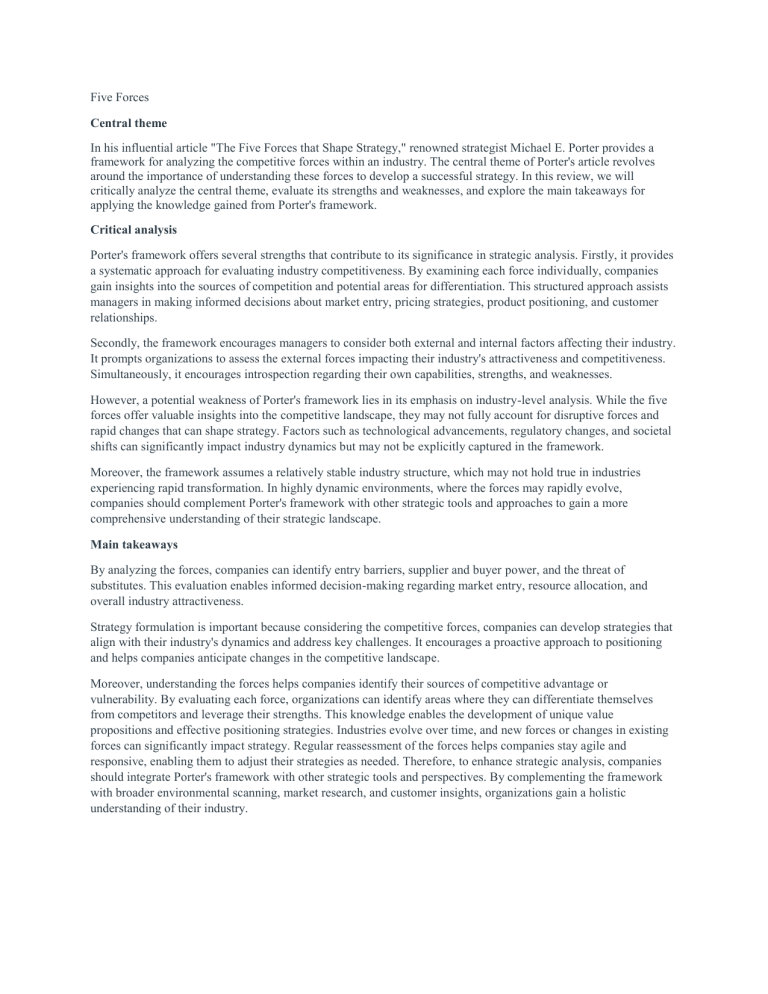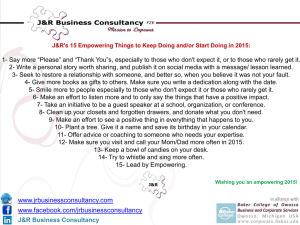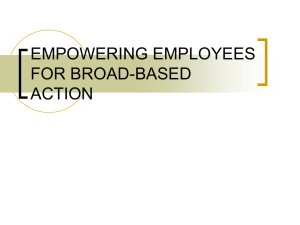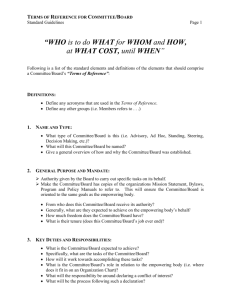
Five Forces Central theme In his influential article "The Five Forces that Shape Strategy," renowned strategist Michael E. Porter provides a framework for analyzing the competitive forces within an industry. The central theme of Porter's article revolves around the importance of understanding these forces to develop a successful strategy. In this review, we will critically analyze the central theme, evaluate its strengths and weaknesses, and explore the main takeaways for applying the knowledge gained from Porter's framework. Critical analysis Porter's framework offers several strengths that contribute to its significance in strategic analysis. Firstly, it provides a systematic approach for evaluating industry competitiveness. By examining each force individually, companies gain insights into the sources of competition and potential areas for differentiation. This structured approach assists managers in making informed decisions about market entry, pricing strategies, product positioning, and customer relationships. Secondly, the framework encourages managers to consider both external and internal factors affecting their industry. It prompts organizations to assess the external forces impacting their industry's attractiveness and competitiveness. Simultaneously, it encourages introspection regarding their own capabilities, strengths, and weaknesses. However, a potential weakness of Porter's framework lies in its emphasis on industry-level analysis. While the five forces offer valuable insights into the competitive landscape, they may not fully account for disruptive forces and rapid changes that can shape strategy. Factors such as technological advancements, regulatory changes, and societal shifts can significantly impact industry dynamics but may not be explicitly captured in the framework. Moreover, the framework assumes a relatively stable industry structure, which may not hold true in industries experiencing rapid transformation. In highly dynamic environments, where the forces may rapidly evolve, companies should complement Porter's framework with other strategic tools and approaches to gain a more comprehensive understanding of their strategic landscape. Main takeaways By analyzing the forces, companies can identify entry barriers, supplier and buyer power, and the threat of substitutes. This evaluation enables informed decision-making regarding market entry, resource allocation, and overall industry attractiveness. Strategy formulation is important because considering the competitive forces, companies can develop strategies that align with their industry's dynamics and address key challenges. It encourages a proactive approach to positioning and helps companies anticipate changes in the competitive landscape. Moreover, understanding the forces helps companies identify their sources of competitive advantage or vulnerability. By evaluating each force, organizations can identify areas where they can differentiate themselves from competitors and leverage their strengths. This knowledge enables the development of unique value propositions and effective positioning strategies. Industries evolve over time, and new forces or changes in existing forces can significantly impact strategy. Regular reassessment of the forces helps companies stay agile and responsive, enabling them to adjust their strategies as needed. Therefore, to enhance strategic analysis, companies should integrate Porter's framework with other strategic tools and perspectives. By complementing the framework with broader environmental scanning, market research, and customer insights, organizations gain a holistic understanding of their industry. Blue Ocean Central theme The central theme of Blue Ocean Strategy revolves around the concept of value innovation and the pursuit of blue ocean markets. Kim and Mauborgne argue that companies should shift their focus from competing in overcrowded, highly competitive red ocean to creating new market spaces where they can simultaneously differentiate themselves and achieve lower costs. By breaking away from traditional industry boundaries, companies can unlock new opportunities for growth and profitability. Critical analysis The strengths of Blue Ocean Strategy lie in its unique perspective on strategy development. The approach challenges conventional thinking by encouraging companies to explore unexplored market spaces and redefine industry boundaries. This disruptive mindset can lead to the creation of uncontested markets, offering companies a significant advantage over their competitors. The strategy canvas, a visual framework introduced by the authors, serves as a valuable tool for companies to analyze their current market position and identify areas of differentiation. By systematically examining key factors and attributes, organizations can uncover new avenues for value creation and innovation. The framework encourages strategic thinking and helps businesses move away from incremental improvements towards substantial value innovation. However, a potential weakness of Blue Ocean Strategy is its applicability to all industries. While the approach can be effective in industries with high competition and ripe for innovation, it may not be as relevant for industries with established monopolies or highly regulated markets. Moreover, the identification of truly unexplored market spaces can be challenging, requiring extensive research, and understanding of customer needs and preferences. Main takeaways Blue Ocean Strategy highlights the importance of venturing into uncontested market spaces where competition is reduced. By identifying and targeting non-customers and addressing their unmet needs, companies can create new demand and unlock untapped growth opportunities. Moreover, the pursuit of value innovation, which combines differentiation and cost-effectiveness, allows companies to break free from the traditional trade-off between the two. By delivering superior value to customers while reducing costs, organizations can position themselves uniquely in the market. The strategy canvas offers a visual representation of a company's competitive positioning and highlights areas for differentiation. Through a thorough analysis of key factors, companies can uncover opportunities for value creation and innovation, enabling them to chart a course towards a blue ocean market. Blue Ocean Strategy emphasizes the need for continuous learning and adaptation. Companies should embrace feedback, monitor market dynamics, and be willing to iterate their strategies based on changing customer preferences and industry trends. The article offers a transformative approach to strategic thinking, urging companies to explore uncharted waters and create uncontested market spaces. By combining value innovation, systematic analysis through the strategy canvas, and a holistic approach to organizational alignment, businesses can break away from the competitive red oceans and chart a path towards sustainable growth and profitability. While the approach may not be universally applicable, its principles provide valuable insights and inspiration for companies seeking to differentiate themselves in highly competitive markets and uncover new avenues for success. Corporate Theory Central theme The central theme of Todd Zenge's "Corporate Theory" revolves around the concept of empowering organizations. Zenge argues that by empowering employees at all levels, organizations can foster a culture of autonomy, innovation, and continuous improvement. The theory highlights the crucial role of leadership in creating an environment where individuals feel motivated, engaged, and supported, leading to enhanced performance and longterm success. Critical analysis One of the key strengths of Corporate Theory lies in its emphasis on empowering individuals. Zenge suggests that when employees are empowered to make decisions, contribute their unique skills and perspectives, and take ownership of their work, they become more engaged and motivated. This leads to increased productivity, creativity, and a sense of fulfillment. By enabling employees to take risks and learn from their experiences, organizations can foster a culture of innovation and adaptability. Moreover, Zenge's theory recognizes the significance of leadership in creating an empowering environment. Leaders who exhibit transformative and servant leadership behaviors can inspire and motivate their teams, promote open communication, and provide guidance and support. By cultivating a culture of trust, collaboration, and continuous learning, leaders can empower employees to reach their full potential and contribute to the organization's success. However, a potential weakness of Corporate Theory is the challenge of implementing empowerment practices in hierarchical and traditional organizations. Shifting towards an empowering culture requires a mindset shift, organizational restructuring, and a willingness to let go of traditional command-and-control structures. It may take time and effort to overcome resistance to change and align the entire organization with the principles of empowerment. Main takeaways Corporate Theory emphasizes the importance of empowering individuals at all levels of the organization. By giving employees autonomy, decision-making authority, and opportunities for growth, organizations can unleash their potential and drive performance. Because of this Effective leadership is critical in creating an empowering environment. Leaders should serve as role models, inspire trust, and provide support and guidance to their teams. By promoting a culture of collaboration and continuous learning, leaders can empower employees to excel and contribute to organizational success. Empowering employees encourages a culture of innovation. When individuals are empowered to take risks, share ideas, and contribute their unique perspectives, organizations can foster a dynamic and innovative environment. This allows them to adapt to changing market conditions, seize new opportunities, and stay ahead of the competition. Corporate Theory emphasizes the importance of continuous learning and development. Organizations should invest in training programs, provide opportunities for skill-building, and create a culture that values learning. By empowering employees to enhance their knowledge and skills, organizations can build a competitive advantage and adapt to evolving challenges. Implementing Corporate Theory may require a transformation in organizational structures, processes, and mindsets. Organizations should embrace change, communicate the benefits of empowerment, and involve employees in the decision-making process. By aligning the entire organization with the principles of empowerment, organizations can create a supportive and empowering culture that drives sustainable success. Overall, the theory offers valuable insights into empowering organizations for sustainable success. By fostering a culture of empowerment, nurturing effective leadership, promoting innovation, and investing in continuous learning, organizations can unleash their full potential and achieve long-term success. While challenges may arise during implementation, the principles of Corporate Theory provide a roadmap for organizations to create an environment where individuals thrive and contribute.



